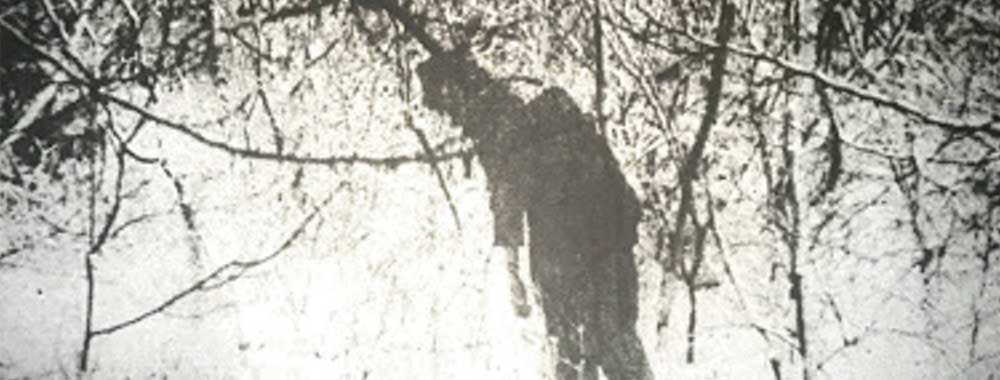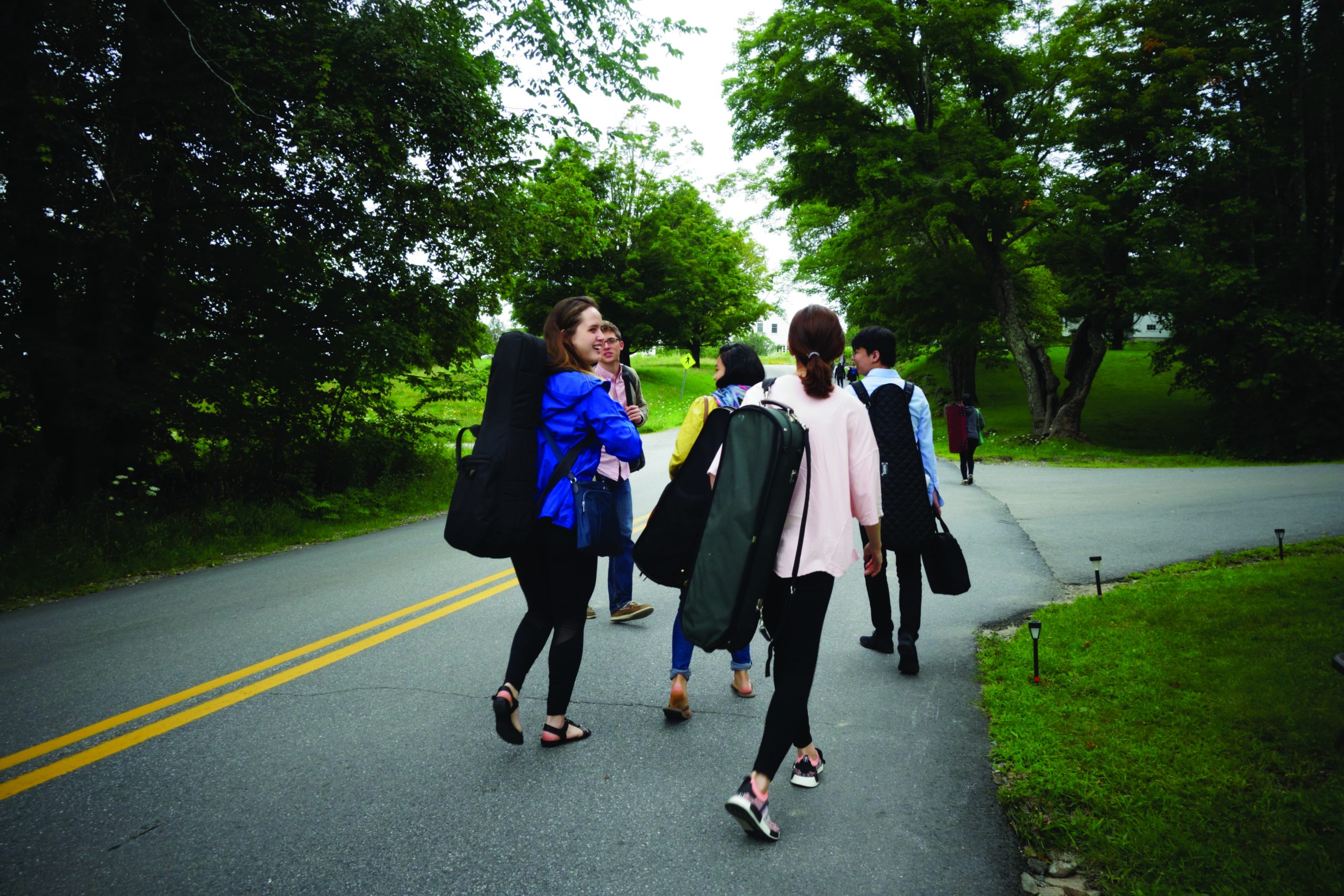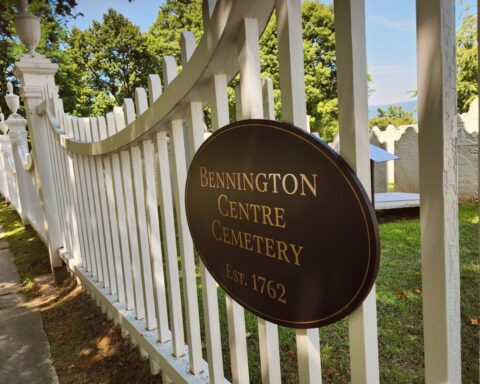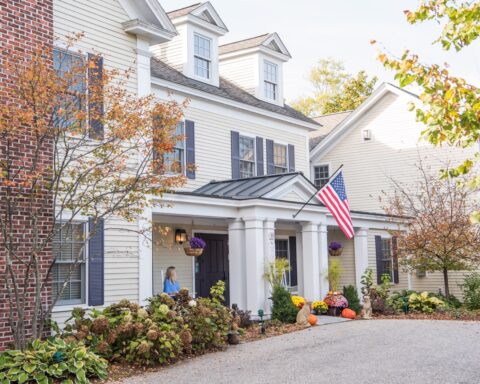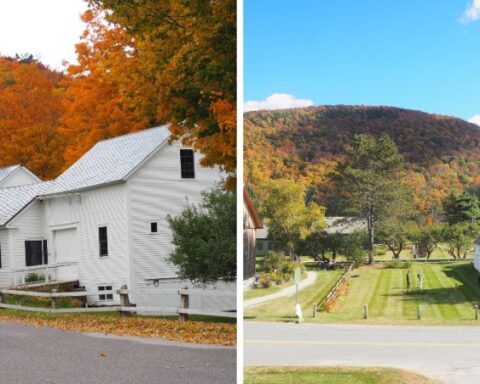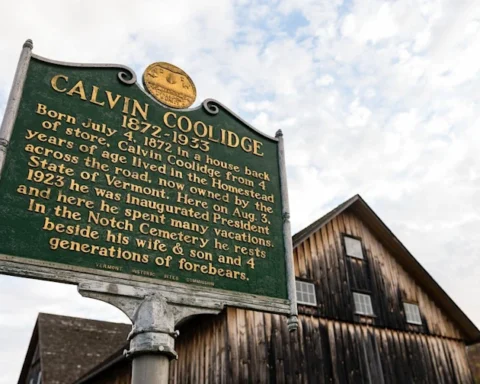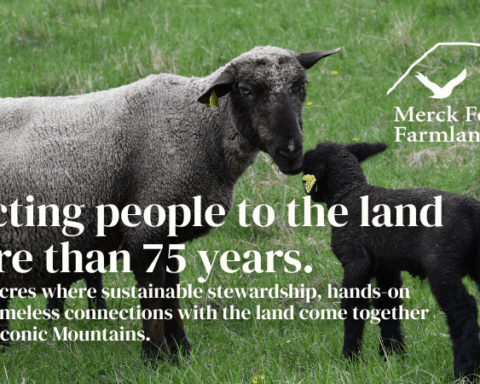Does a Civil War-era hermit still make his home on Mount Greylock?

By Jennifer Huberdeau
On cold winter nights, near the end of January, they say a ghostly figure of a man haunts the Thunderbolt Ski Trail.
“Old Coot,” as he is known, is said to have lived in a shack on the side of Mount Greylock, at the intersection of the Thunderbolt and Bellows Pipe trails. During the few select nights he chooses to appear during the last two weeks of January, Old Coot is said to walk from his former home, along a long-forgotten country road (most likely now the Bellows Pipe Trail) to an overlook above the old Bernard Farm in North Adams, Mass.
“Old Coot is one of the most harmless ghosts ever seen by man. He isn’t one of those chain-rattling, long-fingered gentry that abound in England,” a North Adams Transcript article from Jan. 19, 1939, said of the ghost.
The article, the oldest known reference in print about the winter specter, was published the week before that year’s Massachusetts Downhill Championship was scheduled to take place on the Thunderbolt.
“If Old Coot is not frightened away, he will be seen in the late afternoon near the last bend in the final dip of the ski run, for it was there that he built himself a shack in the late 1860s and where he finally died of starvation and exposure,” read the article’s tongue-in-cheek warning to the thousands of spectators who would gather at the finish line.
The story of Old Coot might have slipped into the annals of time and never been spoken of again had enough snow covered the ground that weekend. But, as fate would have it, the race was postponed for a week and an ambitious photographer from The Transcript and a few others headed out in search of Old Coot. They returned from their adventure with the tale of their encounter, and a photograph of the Thunderbolt’s ghost.
For four days, Transcript photographer Randy Trabold, along with a “small band of intrepid ghost raisers,” staked out the location Old Coot was said to haunt. Then, on the morning of Jan. 27, the image was captured.
According to Trabold, he had stayed behind at the campsite that morning, tucked in his sleeping bag, when an old man appeared.
“He was dressed in a worn and ragged Civil War uniform which seemed to afford little protection to his skinny shanks,” Trabold said.
The man offered a greeting of “Ski Heil!” or “Good skiing!”
Trabold, reportedly not a fan of skiers because “you have to climb hills to take their pictures,” said he responded rather coolly to the greeting.
“Something in the old fellow’s face, however, attracted his interest and he pulled out his camera with the intention of taking a shot at the odd old character. When he looked up from adjusting his shutter, he saw the old chap taking off at top speed. As he went into the woods, his form became faint and then disappeared into thin air.”
But, luckily, Trabold realized who the man was and snapped the shutter just before the ghost disappeared. He then proceeded to write up his account, rounded up his companions and sent the fastest of the group, story in hand, to The Transcript. The account and the photograph of Old Coot, which Trabold reportedly developed in Richmond Cave on his way back, appeared in the Jan. 27 edition of The Transcript.
The tale of William Saunders
But just who was Old Coot? And why does he haunt the Thunderbolt during the winter?
As told in the original Jan. 19, 1939, article, Old Coot was a hermit named William Saunders who made his home on the Adams side of the mountain.
According to the story, Old Coot’s identity was unknown until after his death. A group of hunters, who stumbled upon his shack one February, found the old man frozen to death. It was assumed that he had taken ill and was unable to prepare himself food or light a fire. The hunters found his discharge papers, and his identity was established.
Saunders arrived in the Berkshires in his 20s, with his wife, Belle, and two young children in tow. The couple owned a farm, which, in the original account, was “on the northern outskirts of what is North Adams,” but has also been reported as being on Bob’s Hill in Adams.
The young farmer joined the Union Army and headed off to fight in the Civil War.
“Nothing is known, unfortunately of those years of Saunders’ life other than that he undoubtedly saw action on at least one battlefield, for he was seriously wounded and hospitalized,” the article states.
When Saunders failed to return home from the war, and with no news suggesting that he was still alive, Belle married Milton Cliffords, a freelance farmhand Saunders hired to work in his stead. To her credit, the young mother did not remarry right away. It was a complete year after communications about, and from, her husband ceased that she took another husband.
Then, Saunders returned home.
“No one, not even his most intimate acquaintances recognized the emaciated blue-uniformed gentleman-of-the-road as William Saunders. He had been an impressive figure of a man before he had shouldered a gun.”
With his wife remarried and his farm owned by another man, the unrecognizable Saunders took what little money he had and bought a small piece of land overlooking the Bernard Farm. There, he spent the winters keeping to himself, but in the spring and summer, he came into the valley to find work. The article relates that he worked on local farms, including that of his former wife, and often supped, undetected, with his children.

The legend grows
With the last of the major races on the Thunderbolt taking place in the early 1950s, the tale of Old Coot should have faded into the past, reclaimed like the trail itself by the wilds of Mount Greylock.
But, in February 1965, the story of Old Coot was resurrected when a North Adams resident found a faded copy of the photograph and article in a cookbook. She queried The Transcript about the image, and Trabold, who was not identified in the original as the photographer, once again related, in a newspaper article, his tale of meeting the ghost.
Old Coot was photographed once more, this time by another Transcript staff photographer, in the 1970s, when a team braved the woods in search of the shade.
So, why has the legend of Old Coot survived, even at a time when the Thunderbolt Ski Trail had become a shadow of its former self?
“We keep legends and stories around because they connect us to our past and to our history. Sometimes we hear a story that’s so dark it literally haunts us,” said Jeff Belanger, author, co-host of the “New England Legends” podcast and researcher for the paranormal television show “Ghost Adventures.” “We share those stories as cautionary tales in the hopes we won’t encounter the same fate as those ghosts of our past.”
He added: “The Old Coot is a classic tragic tale of a man who went off to serve his country and fight in the Civil War … Our hearts break for him. He’s so honorable he doesn’t want to interfere in their newfound happiness, but he can’t let them go either, so he lives out in the woods like a hermit where he can still keep an eye on the people he loved so dearly. He’s the epitome of devotion wrapped in a ghost story. It’s not much of a leap to imagine he’s still out there keeping an eye on all of us.”
Jennifer Huberdeau is editor of UpCountry magazine. She also pens the column, “The Cottager,” for Berkshires Week and The Shires of Vermont.
